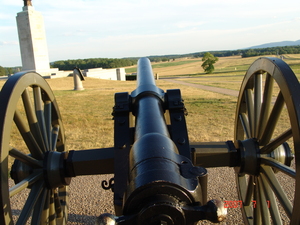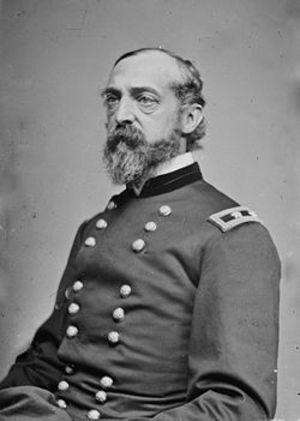Because of the prior circumstances, the true war-making potential of the two major antagonists can only be estimated. About 4,000 of 5,500 tanks and 2,500 of 3,500 artillery pieces in Iraq’s pre-war inventory were lost. It is estimated that Iraqi personnel casualties were about 35,000 killed, about 65,000 wounded, 71,000 captured and 100,000 deserted. Losses incurred in suppressing the post-war insurrections in northern and southern Iraq were not serious.
However, most if not all of the ethnic Kurdish units in the army (perhaps as many as twenty-two separate infantry brigades) dissolved. Elements of the several predominantly Shiite division that survived the Kuwait holocaust defected to rebels in the south following the war, only to be crushed by the still-intact remnants of the loyal and formidable (at least to the ill-prepared Shiite and Kurdish rebels) Republican Guards. In all, approximately 65% of Iraq’s pre-war army ceased to exist. Following the end of the Kuwait war the Republican Guards were partly reorganized, using equipment stripped from regular army units. The regular army, in turn, was partly re-equipped with material stripped from the remnants of the ethnic Kurdish and Shiite units that were disbanded following the Kuwait war.
The Iraq Air Force suffered even greater attrition. Of some 689 pre-war combat aircraft available, approximately 250 were destroyed by coalition forces. An unknown number of additional aircraft were destroyed in hardened shelters. An additional 138 aircraft (the majority top-line, modern combat aircraft) fled to Iran, where they remained. It is estimated that fewer than 300 aircraft remained available, and many of these were non operational due to lack of maintenance and spare parts. Following the war about twenty combat squadrons, with fewer than 225 aircraft, remained operational. The extensive Iraqi pre-war air defense system, shattered by repeated coalition attacks, no longer existed.
The Iraqi Navy, never a credible combat force, was essentially destroyed. Its losses during the Kuwait war included at least 30 of its 39 combat vessels. What remained were a few low-endurance coastal patrol boats.
ARMY
Republican Guard Forces Command
3 armoured mechanized brigades
1 mechanized infantry division (the Baghdad Division, Saddam’s personal guard force, composed of three motorized and one mechanized infantry brigade)
4 motorized infantry divisions
Regular Army Forces
1 mechanized division
24 infantry divisions
8 reserve infantry divisions (cadre only, utilized for internal security duties)
1 airborne brigade
5 artillery brigades
11 fighter/ground attack squadrons
9 fighter squadrons
Despite alarming news reports to the contrary, the UN embargo on arms to Iraq was effective for some time after the war, restricting the Iraqi capability to maintain or replace equipment. In the light of these considerations the post-war structure of the Iraqi armed forces at the end of 1993 was approximately as shown on Table above.
Iran, of course, had suffered heavy losses in its earlier war with Iraq. However, Iran did not suffer the destruction of its economic infrastructure, potentially the most devastating loss to Iraq in the Kuwait war. But the stagnation of world oil prices caused major economic hardship in Iran in the years following the Iran-Iraq war. Combined with the economic problems caused by relative diplomatic isolation, the loss of civil revenue severely curtailed Iran’s ability to purchase arms and spare parts to replace and repair equipment lost in the Iran-Iraq war. It is now known, however, that Iranian oil and natural gas were exchanged with the CIS for finished goods that Iran needed. Much of the exchange was for the one excess item in the Russian economy: arms.
In the army the regular probably manned most of the equipment requiring specialized skills: artillery, armour and air defense material. In general, the Pasdaran were highly motivated but lightly equipped. They acted as a shock force, emphasizing light infantry tactics and night attacks.
Following the end of the Iran-Iraq war pilot training and operational serviceability remained a problem for the Iranian Air Force. However, support from the CIS slightly improved this situation. The seizure in 1991 of 138 Iraqi aircraft, most of which were modern Russian types, enhanced the Iranian Air Force’s capability.
By August 1991 most US combat forces had been withdrawn from the region. A Rapid-Reaction Brigade consisting of army special forces, airbone infantry, marines, and aviation assets remained on the northern Iraqi – Turkish border as a safeguard for the Kurds. US naval forces maintained a minor presence in the Persian Gulf, conducting mine-clearing and patrol operations off the Iraq-Kuwait coast. The US Air Force maintained a few transport elements in the region to conduct logistical support operations. The remaining forces deployed for Operation Desert Storm returned to the US or Europe or were disbanded. Major stocks of material and equipment stocks were used to republish the Marine Corps pre-positioning squadrons at Diego Garcia in the Indian Ocean and on the US coasts.
IRANIAN ARMED FORCES
ARMY
Regular Army
4 mechanized divisions (equivalent to reinforced brigades)
7 infantry divisions
1 special forces division
1 airborne brigade
5 artillery brigades
Revolutionary Guard Corps (Pasdaran)
4 armoured divisions (brigade-sized)
24 infantry divisions
3 marine infantry brigades
many separate armoured, infantry, artillery, air defense and coastal defense battalions (many cadre only)
500 light infantry battalions (Basij, Popular Mobilisation Army`)
8 fighter/ground attack squadrons
4 fighter squadrons
NAVY (controls 3 marine Infantry battalions)
European forces were also withdrawn, again except for those forces participating in security and relief operations in Kurdistan and Kuwait. The French contingent in Djibouti was the only other major European force in the region. Thus, the major responsibility for regional security again devolved on the Gulf nations and their Arab allies. A Gulf peace-keeping force was established that was similar to the pan-Arab Corps deployed for the Kuwait war.
Sources:
“Gulf War”. The Columbia Encyclopedia, Sixth Edition. 2008
“GulfWar”. Wikipedia, the Free Encyclopedia. 2009



